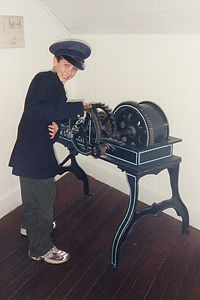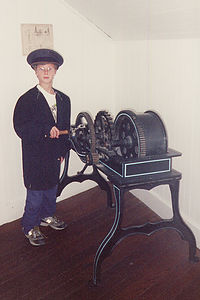- Home
- About
- Map
- Trips
- Bringing Boat West
- Migration West
- Solo Motorcycle Ride
- Final Family XC Trip
- Colorado Rockies
- Graduates' XC Trip
- Yosemite & Nevada
- Colorado & Utah
- Best of Utah
- Southern Loop
- Pacific Northwest
- Northern Loop
- Los Angeles to NYC
- East Coast Trips
- Martha's Vineyard
- 1 Week in Quebec
- Southeast Coast
- NH Backpacking
- Martha's Vineyard
- Canadian Maritimes
- Ocracoke Island
- Edisto Island
- First Landing '02
- Hunting Island '02
- Stowe in Winter
- Hunting Island '01
- Lake Placid
- Chesapeake
- Provincetown
- Hunting Island '00
- Acadia in Winter
- Boston Suburbs
- Niagara Falls
- First Landing '99
- Cape Hatteras
- West Coast Trips
- Burning Man
- Utah Off-Roading
- Maui
- Mojave 4WD Course
- Colorado River Rafting
- Bishop & Death Valley
- Kauai
- Yosemite Fall
- Utah Off-Road
- Lost Coast
- Yosemite Valley
- Arizona and New Mexico
- Pescadero & Capitola
- Bishop & Death Valley
- San Diego, Anza Borrego, Joshua Tree
- Carmel
- Death Valley in Fall
- Yosemite in the Fall
- Pacific Northwest
- Utah Off-Roading
- Southern CA Deserts
- Yosemite & Covid
- Lake Powell Covid
- Eastern Sierra & Covid
- Bishop & Death Valley
- Central & SE Oregon
- Mojave Road
- Eastern Sierra
- Trinity Alps
- Tuolumne Meadows
- Lake Powell Boating
- Eastern Sierra
- Yosemite Winter
- Hawaii
- 4WD Eastern Sierra
- 4WD Death Valley +
- Southern CA Deserts
- Christmas in Tahoe
- Yosemite & Pinnacles
- Totality
- Yosemite & Sierra
- Yosemite Christmas
- Yosemite, San Diego
- Yosemite & North CA
- Seattle to Sierra
- Southwest Deserts
- Yosemite & Sierra
- Pacific Northwest
- Yosemite & South CA
- Pacific Northwest
- Northern California
- Southern Alaska
- Vancouver Island
- International Trips
- Index
- Tips
- Books
- Photos/Videos
- Search
- Contact
Chesapeake Bay Maritime Museum, MD
Thursday, November 9, 2000 - 5:00am by Lolo
22 miles and 0.5 hours from our last stop
Travelogue
 Andrew as lighthouse keeperAfter the Wye Oak, we headed south to St. Michaels, a quaint waterfront town on the Eastern Shore of the Chesapeake, with quiet tree-lined streets and a busy harbor. There are many of these lovely towns along the Chesapeake, but we chose St. Michaels because of the Chesapeake Bay Maritime Museum, which was supposed to be one of the best places to learn about the history and people of the Chesapeake. The great part was that there was no one else there. I guess the slight drizzle and the fact that it was a Thursday in the middle of November could account for the lack of crowds.
Andrew as lighthouse keeperAfter the Wye Oak, we headed south to St. Michaels, a quaint waterfront town on the Eastern Shore of the Chesapeake, with quiet tree-lined streets and a busy harbor. There are many of these lovely towns along the Chesapeake, but we chose St. Michaels because of the Chesapeake Bay Maritime Museum, which was supposed to be one of the best places to learn about the history and people of the Chesapeake. The great part was that there was no one else there. I guess the slight drizzle and the fact that it was a Thursday in the middle of November could account for the lack of crowds.
The museum covers 18 acres and has both indoor and outdoor exhibits. They have a very large collection of Chesapeake Bay watercraft, ranging from skipjacks to duck hunting boats. The skipjack, which is Maryland’s state boat, is used for dredging for oysters. During the late 1800s, these boats brought in as much as 15 million bushels of oysters a year. Today, however, the oyster harvest is a mere 1% of that. That combined with a law allowing motor-powered boats to be used for dredging has virtually eliminated the use of skipjacks. There are only a handful will dredging on the Bay.
In addition to being a center for fishing, the Chesapeake area is along the Atlantic Flyway, making it a duck hunter’s paradise. The museum had an amazing collection of waterfowl decoys. However, the exhibit that attracted us the most, probably because of our shock and disbelief, was an example of a boat used for duck hunting. The boat, which was nicely camouflaged to allow it to sneak up on unsuspecting birds, had about a dozen guns protruding from its sides. I had a hard time reconciling the thought of grown men sneaking up on and blowing away sitting ducks with sportsmanship. Those poor birds didn’t stand a chance.
 Tommy as lighthouse keeperI thought one of the nicest parts of the museum was the hexagonal Hooper Strait Lighthouse, which is an example of a screwpile lighthouse. It’s called screwpile, because it’s built on piles that are screwed into the sandy or muddy bottoms of the Bay. However, this one was much neglected, so the museum purchased it in 1966 and had it moved to the museum grounds and restored. Today the public is allowed inside where there are exhibits relating to its history. I thought it was one of the prettiest and most unique lighthouses I have ever seen.
Tommy as lighthouse keeperI thought one of the nicest parts of the museum was the hexagonal Hooper Strait Lighthouse, which is an example of a screwpile lighthouse. It’s called screwpile, because it’s built on piles that are screwed into the sandy or muddy bottoms of the Bay. However, this one was much neglected, so the museum purchased it in 1966 and had it moved to the museum grounds and restored. Today the public is allowed inside where there are exhibits relating to its history. I thought it was one of the prettiest and most unique lighthouses I have ever seen.
After the museum, we decided to take a ride down to the end of Tilghman Island, one of the many fingerlike pieces of land that project out into the Bay. It was a very pretty drive through farmland with an occasional great view of the Bay. Near the end we crossed the tiny Knapp Narrows and entered the little fishing town of Tilghman. Eventually the road just ended abruptly at a gate with a private property sign for the Black Walnut Point Inn. We parked the motorhome outside the gates and got out to stretch our legs. Gates have this tendency to make me feel like I’m being kept from something really good on the other side, so I started to walk around it to see what I would find—after all, it was an Inn and I could just be someone inquiring about a future stay. Tommy, however, was still quite literal at this point in his life, and was appalled at my violation of this sign. I explained to him that we were just checking things out in case we ever wanted to come back here to stay. Andrew was all for checking it out, and Herb said he would stay with the RV. I could see Tom’s wheels spinning now as he had to choose between his dislike of breaking rules and his equally strong dislike of missing out on something his brother was doing. He decided to come along and make us miserable during the process. We didn’t wander too far, mostly because Tommy was making me feel like a criminal, but we did see that there was a very lovely main house and cottages with fabulous views of the Bay on all sides. It would be a wonderful place to come back to sometime, as guests rather than trespassers.
Description
Situated on the waterfront in historic St. Michaels, the Chesapeake Bay Maritime Museum is one of the premier museums focusing on the history and traditions of the Chesapeake Bay. Unlike most museums which depend on tour guides or costumed interpreters to bring history to life, this museum offers you the real thing: people who actually live the story they tell. There are master decoy carvers, shipwrights, crab pickers, and boat builders going about their trades and anxious to share their story with visitors.
Some of the things to see at this indoor/outdoor museum include:
- The largest collection of Chesapeake Bay watercraft in existence (76 boats), including a skipjack (Maryland’s state boat)
- An authentic 1879 screwpile lighthouse
- A working boatyard
- An extensive waterfowl decoy collection
The Museum is open daily year-round.
- ‹ previous
- 3 of 7
- next ›
